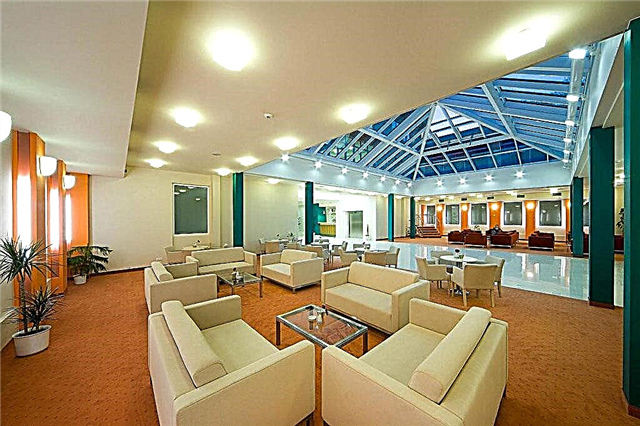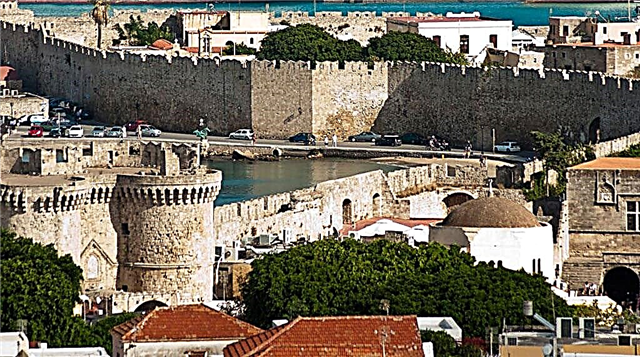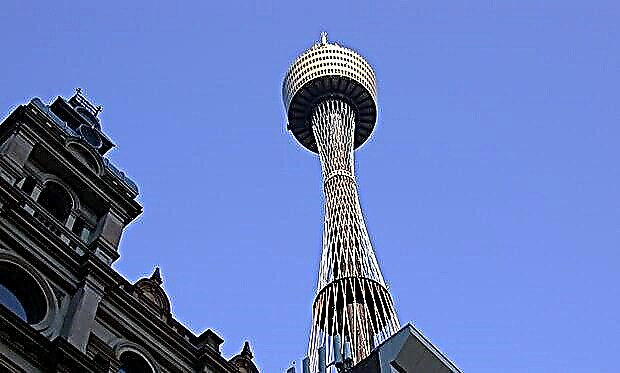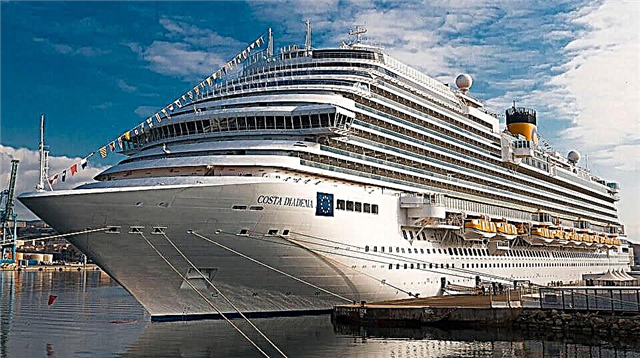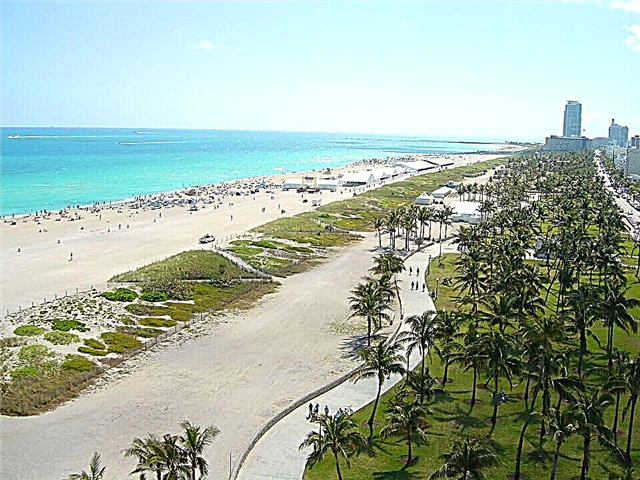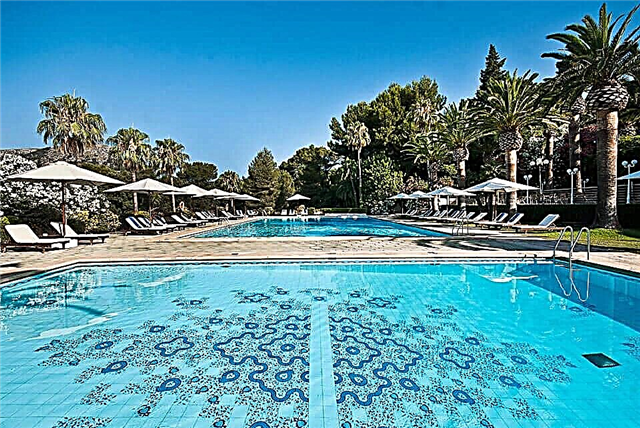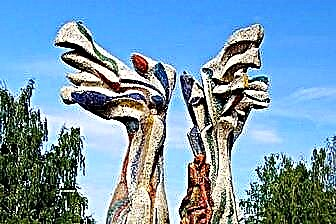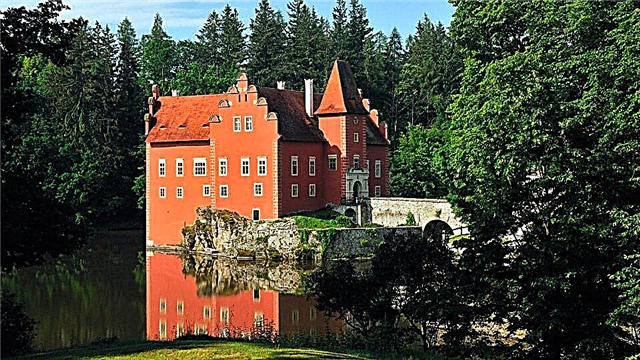Medieval castles are always of great interest to tourists. Červena Lhota Castle in the south of the Czech Republic is no exception. Moreover, the location of this amazing castle in the middle of a picturesque lake gives it a special charm and mystery.

Construction history
Now no one can name the exact date of the construction of this ancient fortress. Only the first mentions of it, dated 1465, have survived. Most historians are inclined to believe that the castle was built in the 13th century.
Interestingly, until the middle of the 16th century, the castle existed as a fortress built in the Gothic style, and in the 50s it was rebuilt in the Renaissance style. At the same time, the isthmus that connected the castle with the coast was removed and a dam was built, blocking the Deshten stream. Thus, the water level in the lake rose, and the castle was surrounded by a water barrier on all sides. To get to the castle, it was necessary to use a drawbridge, which was later replaced by a stone one. It has survived to this day and, if you wish, you can walk along it.

Why such a name
Until the 17th century, the castle was traditionally white and was called Lhota. In the 17th century, it became the property of the Kabu family from Rybnian. After some time, the new owners unexpectedly surprised all the walls surrounding their fortress with red color. Since then, the castle has received a new name Cherven Lhota. The color of the building, unusual for those times, caused a lot of rumors, gossip and speculation. This is how legends appeared, explaining the origin of the name of the castle and the reason for the walls painted red.
Castle Legends
One of these legends tells that once upon a time a family of noble aristocrats lived here. Father and daughter always prayed fervently, worshiping God and sincerely believing in him. Once the girl doubted her faith, because she could not come to terms with the sudden death of her mother. She loved her mother so dearly that she began to condemn God for not giving her mother healing, and stopped praying and praising him. The girl hated Christianity so much that one day she tore off the cross from the wall and threw it into the lake. At the same moment, waves rose on the lake, a piercing wind blew, and black clouds covered the sky.

When the young aristocrat turned around, she saw the devil standing in the middle of her room. Before she had time to recover, the devil picked her up and took her to hell, leaving after his appearance the smell of burning and clouds of thick smoke. When the smoke cleared, the inconsolable father and the servants saw that the devil had painted a cross on the castle wall with human blood. The servants tried to paint over the evil mark of the devil, but their efforts were in vain. The image of the bloody cross appeared over and over again. In order to somehow get rid of the devil's mark, all the walls of the castle were repainted red. However, to this day, you can, by looking closely, see a barely discernible trace of the devil's drawing.
The content of the second legend about the origin of the red color of the castle walls is very similar to the content of the first. Only the main characters in it are historical figures - the knight Gutrame Kaabe from Rybnian and his wife Zhanna from Dirn. In this legend, the husband appears in the guise of a faithful Catholic, and the wife in the guise of an admirer of Protestantism. Opposing her husband, Jeanne throws a Catholic cross into the lake, and further events develop like the previous legend. A storm rises on the lake, the devil appears and disappears with Jeanne in her arms at the bottom of the lake. And a bloody cross appears on the wall. Trying to get rid of the devil's cross, the walls of the castle are repainted red.

This legend is based on historical facts. There was a confrontation between the two branches of the Kaaba family that lived in the castle, based on religious beliefs. Some representatives of this family professed the Catholic faith, while others were adherents of Protestantism. This confrontation was the cause of not only ordinary family quarrels, but often reached the point of bloodshed. The family cross, which was the cause of the strife, did exist. It can still be seen in the church of St. Otto in Deshtna, where it is kept.
Interesting articles:
- Hradcanska Square in Prague
- Hluboka nad Vltavou castle in the Czech Republic
- Gouska castle in the Czech Republic
- Dancing House in Prague
- Public House in Prague
- Tesnov Dam in the Czech Republic
Historic site
With the advent of the socialist era, an active struggle against the religious past began. The castle was nationalized and a summer camp for children was placed there. Later, one of the officials decided to arrange a place in the castle for the workers of the Ministry of Agriculture to rest. To prevent this valuable historical site from turning into a recreation area for high-ranking officials, the castle keeper drained the lake by raising a dam. When a high-ranking commission came to inspect the future dacha, the castle appeared surrounded by a muddy puddle and the idea of creating a dacha was abandoned. Soon, the castle was declared a historical site and, since 1949, excursions began to be held there.

Interesting exhibits
Visitors to the castle are attracted by many interesting exhibits, including an ancient vase, preserved from ancient times. Experts have established that its age is about 2.5 thousand years.
The castle contains a portrait of the ugliest woman, Margaret of Tyrol. Emphasizing the far unattractive features of a woman, she is called Margarita Multash. The fact is that maultashi is a favorite dish among the Germans, resembling dumplings in appearance. This antique reproduction of a painting by Quentin Masseis is also known as The Ugly Duchess. It should be noted that Margarita of Tyrol was not at all as ugly as she is depicted in the picture. Myths about the ugly appearance of a noble lady began to spread the church after her divorce without the permission of the church.

The only daughter of the King of Bohemia Heinrich Horutansky, eleven-year-old Margarita of Tyrol, was married to the son of the Czech king Jan of Luxembourg, who at the time of the wedding was barely seven years old. In 1341, Margaret chased her husband away without receiving a divorce from the church, and began to live with her new husband, the son of the emperor of the Roman Empire, Ludwig of Bavaria. The Pope was furious with such an act of the daughter of the Czech king and ordered to excommunicate her and Ludwig from the church. After such events, the Vatican began to present Margaret of Tyrol in the form of a terrible and ugly woman.
Lake around the castle
Also deserves the attention of visitors. To admire its beauty, you can use a boat rented from a local boat station and take a leisurely walk along the lake, cutting its surface with oars. The trail near the lake can also be of well-deserved interest among visitors. Walking along it, you can admire the castle from different angles. From here it is convenient to take pictures for memory. Moreover, it was from this path, framed by dense tree crowns, that the main shots of "Goldilocks" and "The Princess and the Pea" were filmed.

Excursions
It is best to take a walk around the castle and its surroundings with a guide. In this case, there is an opportunity to visit the most mysterious corners of the castle and even go down to remote cellars and cellars. It should be noted that the guided tours are conducted in Czech, German and English. So if you don't own at least one of them, you need to find a translator.
You can explore the castle from mid-spring to mid-autumn. The rest of the time, the castle is closed to visitors.This is due to unfavorable weather conditions in the autumn-winter period and the difficulties of transport links with the castle.

How to get there
To visit Cervena Lhota, you need to consider the opening hours of the castle and pay attention to the types of transport that are best used to get to this historic site. Trains do not go to these distant places. The nearest train station is 10 km away. Therefore, a bus can be considered a good means of transportation. Travel time from Prague to the Chervena Lhota stop will be less than 1.5 hours. However, it should be borne in mind that there is no direct flight. Therefore, you should be careful on the way and get off on time at the right stop.
If you do not want to wait for the bus for a long time, you can use a rented car and set off on your own. In this case, it is better to use the transfer service from Prague to the castle. The fact is that there are many turns and narrow streets on the way, so you can easily get lost or wander for a long time in search of the coveted castle.
Cycling is another convenient way to get to the historic site. It must be said that an international cycling track leading from Prague to Vienna passes nearby Cherven Lhota. So cyclists and cycling enthusiasts can take advantage of this trail. Such an extreme trip will benefit your health and will give you the opportunity to enjoy the beauty of the castle and its surroundings.
Read what to bring from the Czech Republic in our life hack.

